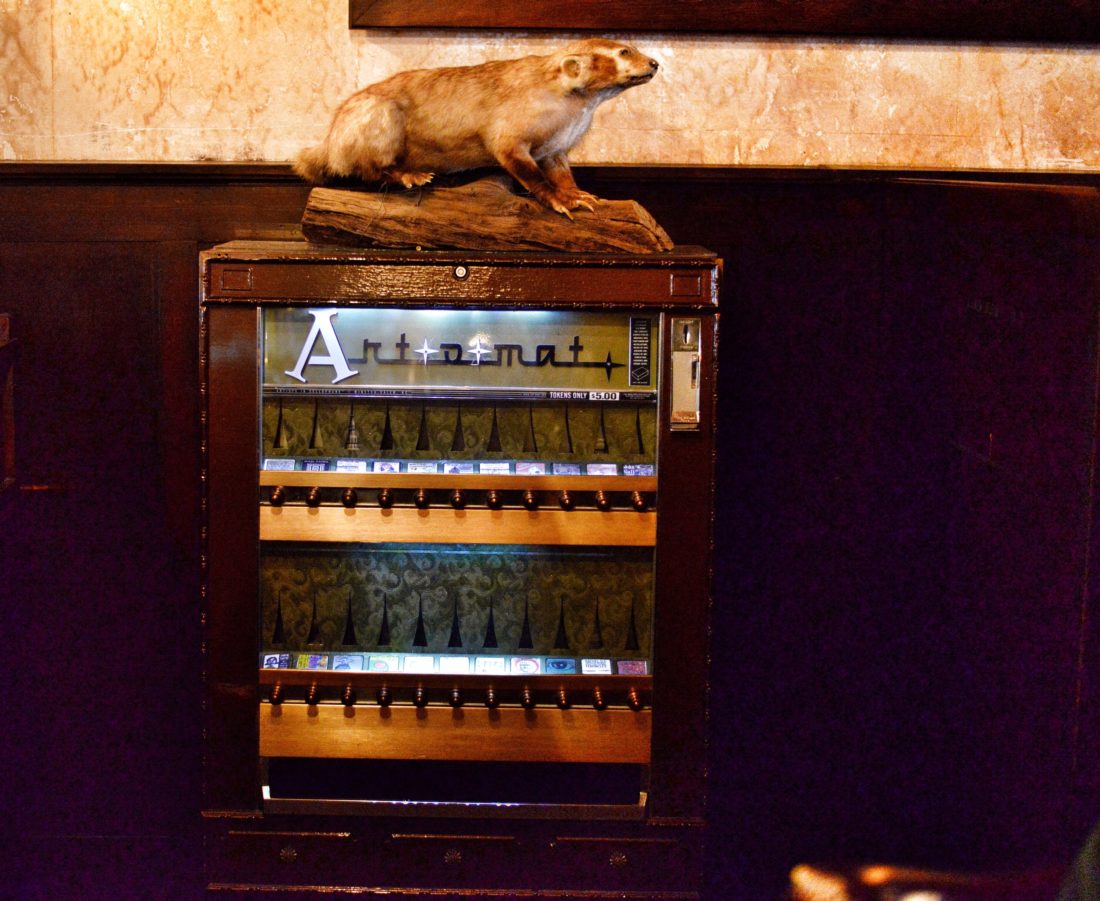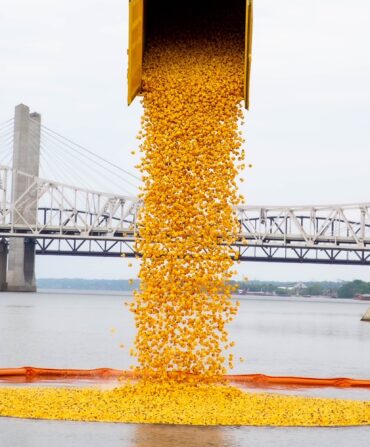Cigarette machines were once found throughout the country, but especially in Winston-Salem, North Carolina, home to the R.J. Reynolds tobacco empire. But by the 1990s, many were decommissioned and left to rust as the risks of smoking became more apparent—that is, until a local came up with an idea for a way to repurpose them.
Instead of putting cigarette packs in a machine, the artist Clark Whittington began inserting tiny pieces of art, in cartons of the same size—starting with his own and then expanding to include other artists—and dubbed it the Art-o-mat. He set out the first machine at a solo art show in a since-closed local coffee shop called Pennie University, in 1997.

People have since donated machines to him, and he’s purchased others at auction. He then outfits them to hold the artwork and decorates them, often to coordinate with where they’ll be located. Today, Art-o-mats can be found at more than two hundred spots all over the country—in art museums, hotels, bars, and galleries (including the Cosmopolitan in Las Vegas, the Hunter Museum of American Art in Chattanooga, and the Esquire Tavern in San Antonio) as well as on countless college campuses. A map of the locations on the Art-o-mat website also shows one in Berlin and another in Australia.
The artists, who receive commissions from sales, apply through the website and must supply a certain number of works to keep up with the demand. The art objects themselves vary wildly, from a block print to a piece of jewelry to felted critters. There’s a constant need for more art to refill the machines, which are leased to venues that purchase the art.

But Whittington isn’t finished. “I have about 125 machines in a warehouse,” he says. “A lot of the initial machines that are across the country have a lineage to Winston-Salem, and I can track it back and say, ‘This machine was there.’” But what’s most important to Whittington is making art accessible: “We have anywhere from three to four hundred artists at any given time, and we sell things for five bucks.” Perhaps the best place to seek out an Art-o-mat is at Delurk Gallery, in Winston-Salem’s arts district, where Whittington can be seen working on the machines. During my visit, a machine had just been sent to the Momentary, a contemporary art space in Bentonville, Arkansas. Even twenty-five years later, “We have a lot of demand,” Whittington says. “We have orders coming in every day, going somewhere around the country, and we have new contracts in the works all the time.”









